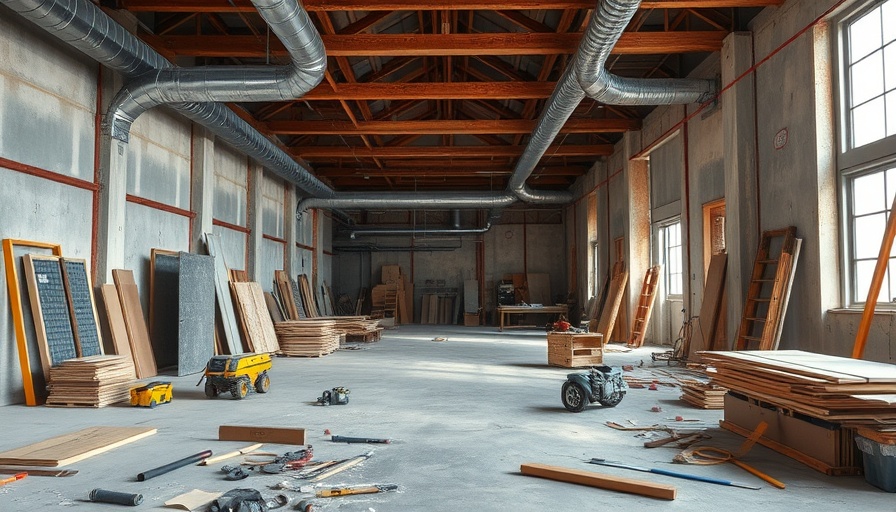
Understanding the Impact of Tariffs on Home Renovations
In recent years, the aspiration for home renovations—from chic kitchen remodels to luxurious bathroom upgrades—has been meeting a challenging financial landscape, largely influenced by increasing tariffs on imported materials. Tariffs, taxes imposed on goods entering the United States, are raising the costs of essential building materials like steel and aluminum, which many homeowners and contractors rely on. When undertaking a renovation project, it’s vital to grasp how these tariffs filter through the supply chain, impacting everything from structural steel in commercial builds to high-end kitchen cabinets and bathroom tiles.
Smart Strategies for Savvy Homeowners
So how can homeowners navigate this complex environment without sacrificing the quality of their renovations? Here are some detailed strategies that can help mitigate the costs associated with tariffs, ensuring renovations remain attainable:
Prioritize Domestic Options and Explore Global Alternatives
Choosing materials made within the U.S. is a logical starting point for cost-conscious homeowners. However, it’s also beneficial to research international suppliers in countries with friendly trade relations, potentially sidestepping some tariff impacts. Seek materials that blend affordability and quality, such as sustainably sourced lumber or durable tiles from non-tariff countries.
Optimize Design and Material Efficiency
Efficiency in both design and construction can help reduce waste and costs. Collaborate with experienced designers and contractors to explore modular construction methods, which not only save material but can also lead to quicker project completions. This approach allows for better use of materials and minimizes waste—essential for staying within budget.
Consider Long-Term Value Over Initial Costs
In the realm of home renovations, some decisions are best approached with an eye on longevity rather than just upfront expenses. While premium materials may be influenced by current tariffs, investing in high-quality options often leads to lower maintenance costs and energy savings over time. For example, durable countertops and energy-efficient appliances might appear expensive initially, yet they save money and hassle over their lifespan.
The Role of Smart Negotiation
Homeowners should not shy away from negotiation. Whether it’s engaging with contractors on labor costs or discussing material prices with suppliers, a candid conversation can lead to significant savings. Don't hesitate to seek multiple bids from contractors, which can provide valuable comparisons and insights into the going rates and options.
Future Insight: Preparing for Continued Changes
As tariffs evolve, so too will the materials landscape in home renovation. Staying informed on potential tariff updates will position homeowners to make educated choices. Attend local home shows or join online forums to glean insights from other homeowners facing similar challenges. Additionally, consider connecting with local contractors who can guide you through material sourcing and help navigate tariff influences.
Conclusion: Empowering Your Renovation Journey
Home renovations can indeed be daunting, especially with the unpredictable nature of tariffs. Yet, by utilizing smart strategies—such as focusing on quality materials, engaging in meticulous planning, and maintaining open lines of communication—homeowners can still achieve their dream renovations. Understanding the intricacies behind costs and sourcing can transform a challenging process into an rewarding and fulfilling home improvement journey.
For expert guidance on connecting with trusted contractors who understand these challenges, consider utilizing services like Sweeten, where personalized support is provided without any cost. Start your renovation journey today and realize your aspirations while navigating through any financial headwinds!
 Add Row
Add Row  Add
Add 




 Add Row
Add Row  Add
Add 

Write A Comment